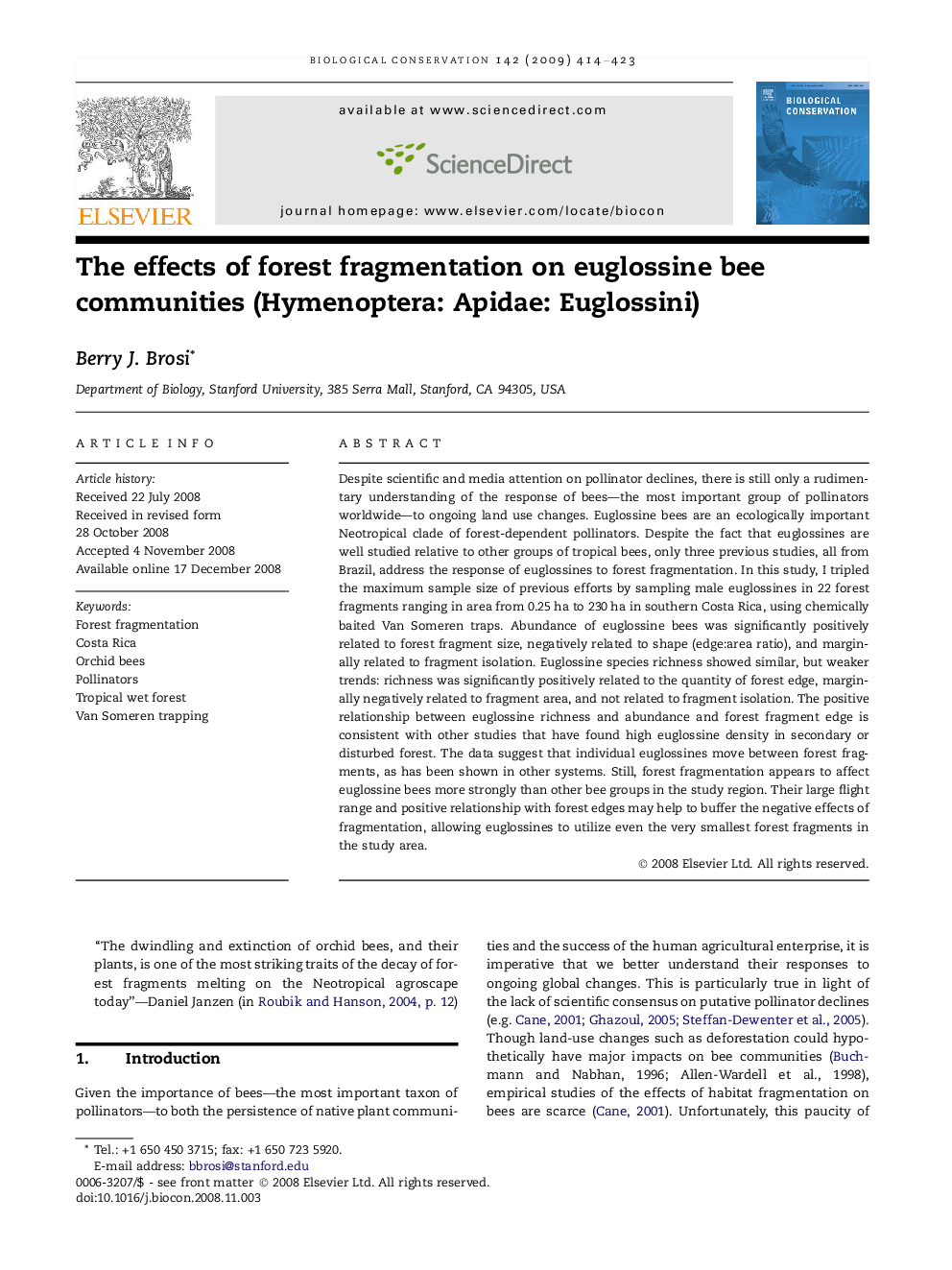| کد مقاله | کد نشریه | سال انتشار | مقاله انگلیسی | نسخه تمام متن |
|---|---|---|---|---|
| 4386590 | 1304571 | 2009 | 10 صفحه PDF | دانلود رایگان |

Despite scientific and media attention on pollinator declines, there is still only a rudimentary understanding of the response of bees—the most important group of pollinators worldwide—to ongoing land use changes. Euglossine bees are an ecologically important Neotropical clade of forest-dependent pollinators. Despite the fact that euglossines are well studied relative to other groups of tropical bees, only three previous studies, all from Brazil, address the response of euglossines to forest fragmentation. In this study, I tripled the maximum sample size of previous efforts by sampling male euglossines in 22 forest fragments ranging in area from 0.25 ha to 230 ha in southern Costa Rica, using chemically baited Van Someren traps. Abundance of euglossine bees was significantly positively related to forest fragment size, negatively related to shape (edge:area ratio), and marginally related to fragment isolation. Euglossine species richness showed similar, but weaker trends: richness was significantly positively related to the quantity of forest edge, marginally negatively related to fragment area, and not related to fragment isolation. The positive relationship between euglossine richness and abundance and forest fragment edge is consistent with other studies that have found high euglossine density in secondary or disturbed forest. The data suggest that individual euglossines move between forest fragments, as has been shown in other systems. Still, forest fragmentation appears to affect euglossine bees more strongly than other bee groups in the study region. Their large flight range and positive relationship with forest edges may help to buffer the negative effects of fragmentation, allowing euglossines to utilize even the very smallest forest fragments in the study area.
Journal: Biological Conservation - Volume 142, Issue 2, February 2009, Pages 414–423